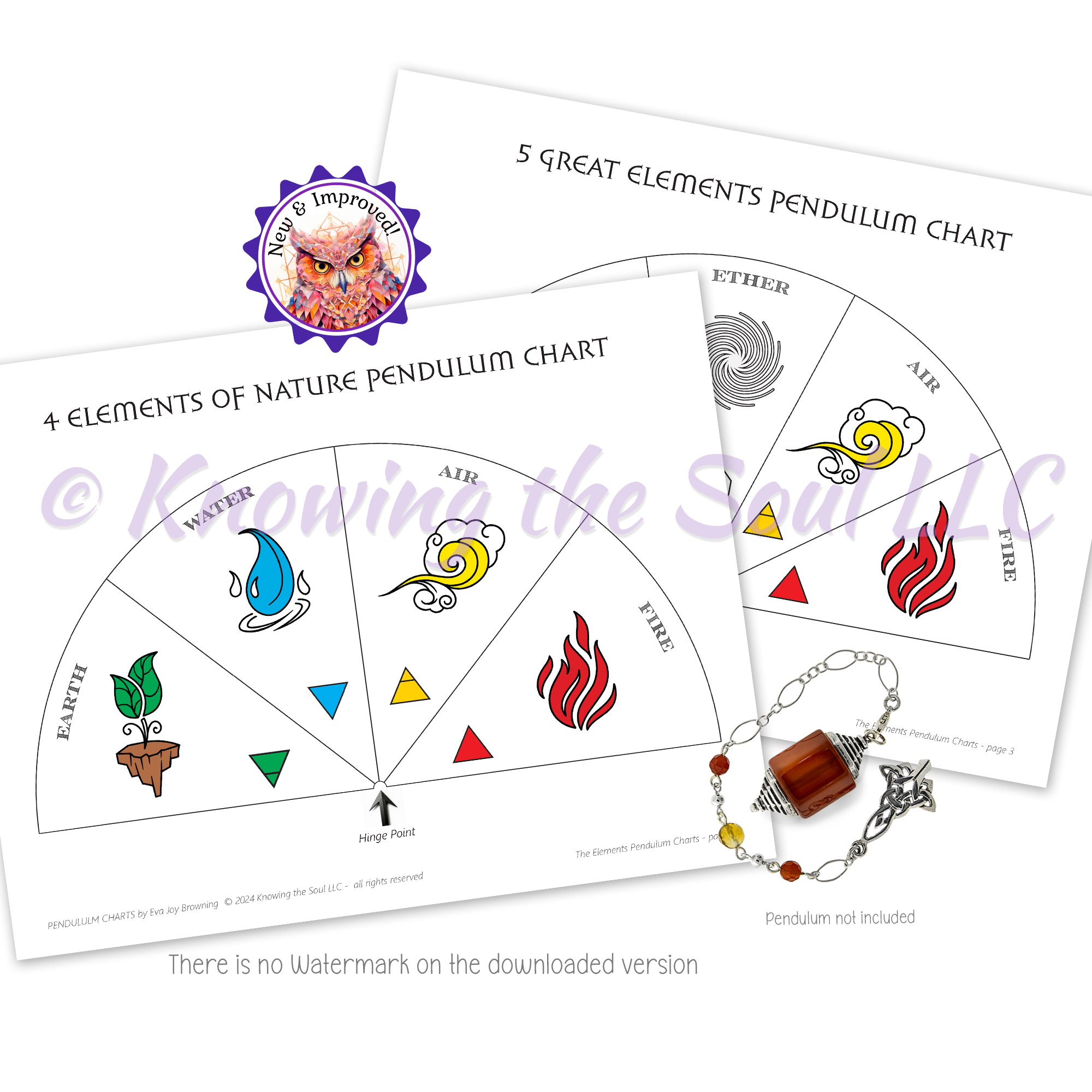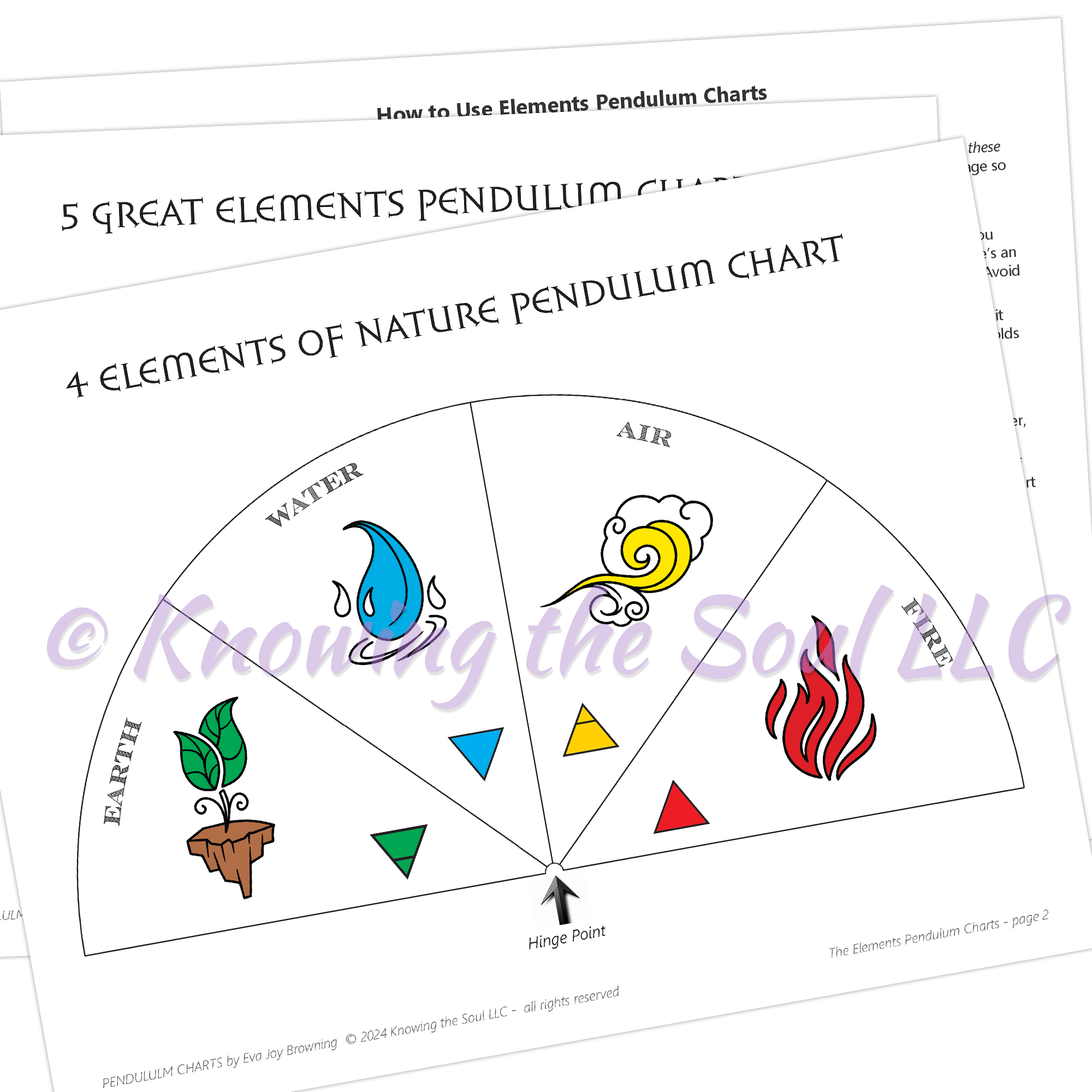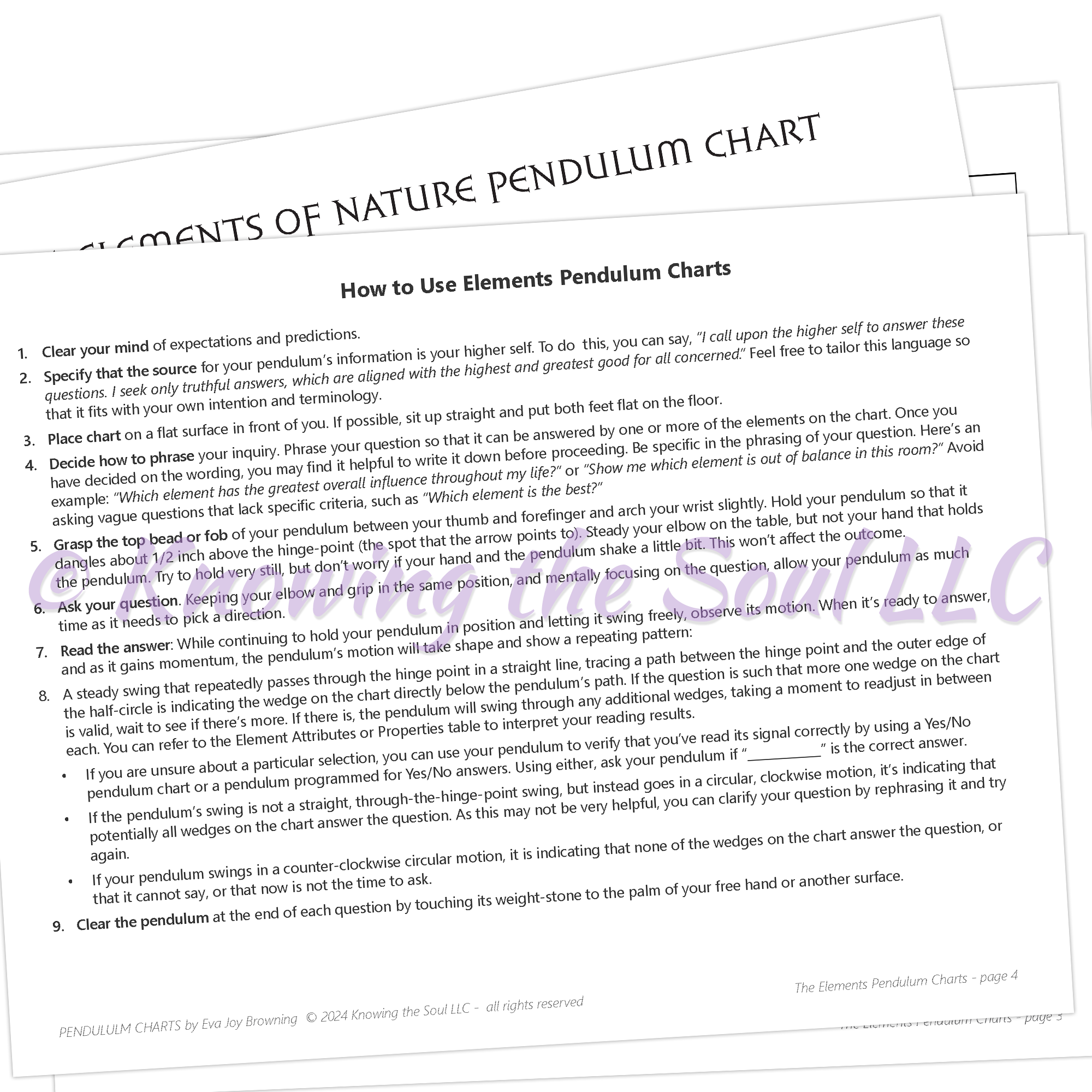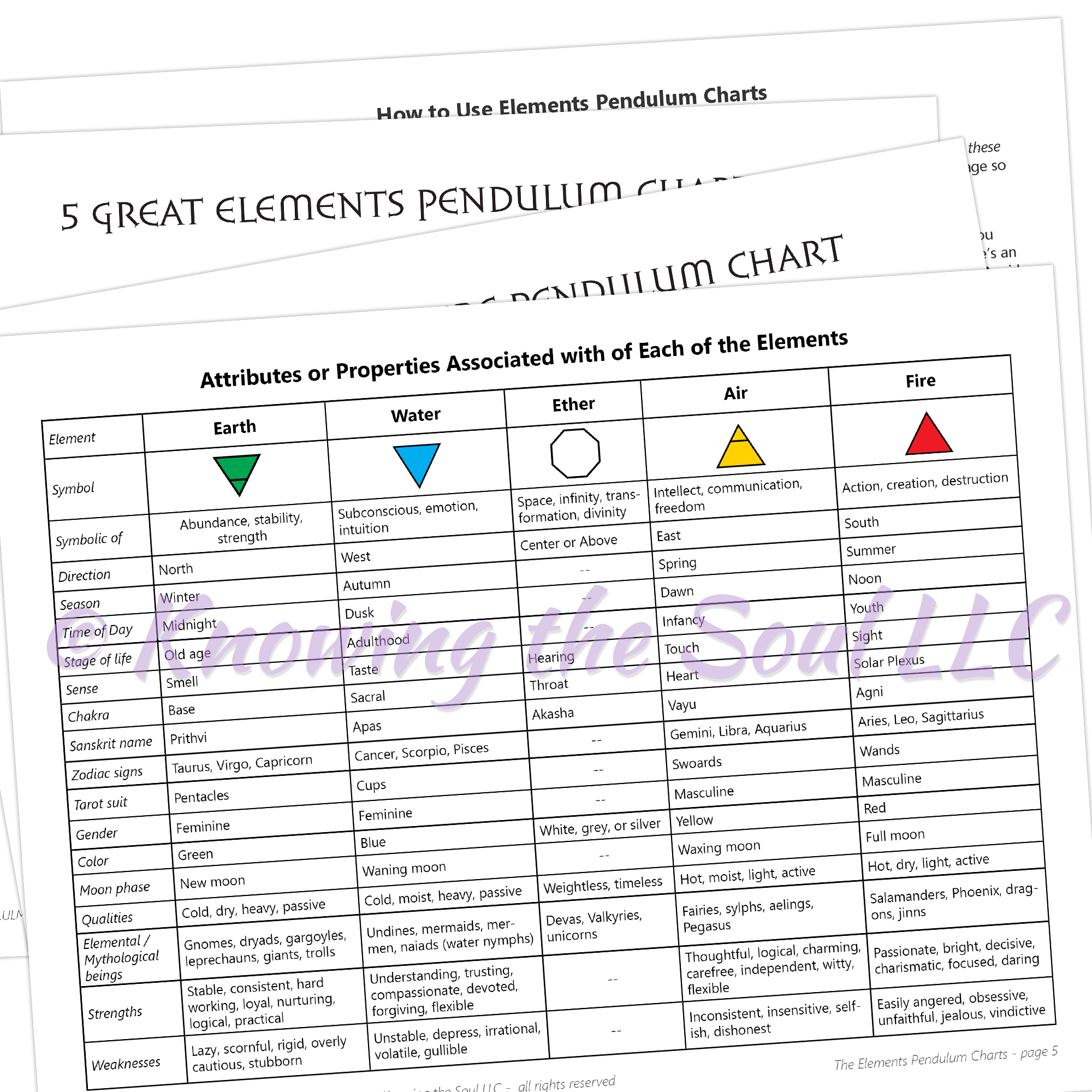Printable Elements Pendulum Chart - Digital Download - Now includes 2 Charts!
This product is available for purchase at our Etsy shop.
This chart is available at our Etsy Shop.
Get in touch with the elements using your pendulum and these two exclusive, new and improved, full color pendulum charts by Ask Your Pendulum®. Included are two charts that focus on “elements”, the fundamental building blocks of the universe. The first chart contains the Four Elements of Nature – earth, water, air, and fire. These fundamental concepts, proposed by ancient Greeks, were used to explain the complexities of the natural world. The second chart also contains earth, water, air, and fire, alongside Ether, the mysterious “fifth element”. Ether is part of the Panchamahabhutas, the “five great elements” in Hinduism that describe the universe’s fundamental building blocks.
A note from the creator of Ask Your Pendulum: This chart is the product of my own hard work, research and/or creativity, to which I hold the copyright thereto and reserve all rights. If you are purchasing the download, you may print this chart out for your own use as often as you like. However, you may not distribute, publish, project in any way, or display on any internet website without my express written permission.
How to Use
- Clear your mind of expectations and predictions.
- Specify that the source for your pendulum’s information is your higher self. To do this, you can say, “I call upon the higher self to answer these questions. I seek only truthful answers, which are aligned with the highest and greatest good for all concerned.” Feel free to tailor this language so that it fits with your own intention and terminology.
- Place chart on a flat surface in front of you. If possible, sit up straight and put both feet flat on the floor.
- Decide how to phrase your inquiry. Phrase your question so that it can be answered by one or more of the elements on the chart. Once you have decided on the wording, you may find it helpful to write it down before proceeding. Be specific in the phrasing of your question. Here’s an example: “Which element has the greatest overall influence throughout my life?” or “Show me which element is out of balance in this room?” Avoid asking vague questions that lack specific criteria, such as “Which element is the best?”
- Grasp the top bead or fob of your pendulum between your thumb and forefinger and arch your wrist slightly. Hold your pendulum so that it dangles about 1/2 inch above the hinge-point (the spot that the arrow points to). Steady your elbow on the table, but not your hand that holds the pendulum. Try to hold very still, but don’t worry if your hand and the pendulum shake a little bit. This won’t affect the outcome.
- Ask your question, keeping your elbow and grip in the same position.
-
Read the answer: While holding your pendulum in position directly over the hinge point and letting it swing freely, observe its motion. While mentally focusing on the question, allow your pendulum as much time as it needs to pick a direction. When it’s ready to answer, and as it gains momentum, the pendulum’s motion will take shape and show a repeating pattern:
- A steady swing that repeatedly passes through the hinge point in a straight line, tracing a path between the hinge point and the outer edge of the half-circle is indicating the wedge on the chart directly below the pendulum’s path. If the question is such that more one wedge on the chart is valid, wait to see if there’s more. If there is, the pendulum will swing through any additional wedges, taking a moment to readjust in between each. You can refer to the Elements of Nature table to interpret your reading results.
- If you are unsure about a particular selection, you can use your pendulum to verify that you’ve read its signal correctly by using a Yes/No pendulum chart or a pendulum programmed for Yes/No answers. Using either, ask your pendulum if “____________” is the correct answer.
- If the pendulum’s swing is not a straight, through-the-hinge-point swing, but instead goes in a circular, clockwise motion, it’s indicating that
potentially all wedges on the chart answer the question. As this may not be very helpful, you can clarify your question by rephrasing it and try again.
- If your pendulum swings in a counter-clockwise circular motion, it is indicating that none of the wedges on the chart answer the question, or that it cannot say, or that now is not the time to ask. -
Clear the pendulum at the end of each question by touching its weight-stone to the palm of your free hand or another surface.






